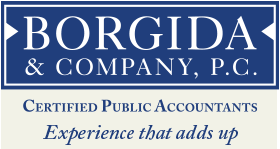1. Fund Your IRA
Taxpayers with earned income can fund an IRA for 2020. The due date for this contribution is April 15, 2021. Taxpayers can fund up to $6,000 if they have this much in earned income. Taxpayers age 50 and over can make an additional Catch Up contribution of $1,000 for a total of $7,000. Earned income is from working as an employee and getting paid wages. Additionally, earned income is from having your own Sole Proprietorship, Single Member LLC or a Partner in a Partnership that has an operating business.
Higher income taxpayers will not be able to deduct an IRA. If you and your spouse are not active participants in a qualified retirement plan, you can make tax deductible contributions to your IRA’s. The most common qualified retirement plan employees may participate in is their employers 401(k) Plan. If you or your spouse is an active participant in a qualified retirement plan, some or all of your IRA contribution may not be tax deductible.
For single taxpayers covered by a retirement plan at work, they can deduct their IRA contribution if their modified adjusted gross income is $65,000 or less. When their income is $75,000 or more, they don’t get a tax deduction. Incomes between these two thresholds will allow for a partial deduction.
For married couples covered by a retirement plan at work, they can deduct their IRA contribution if their modified adjusted gross income is $104,000 or less. When their income is $124,000 or more, they don’t get a tax deduction. Incomes between these two thresholds will allow for a partial deduction.
2. Fund Your Roth IRA
Taxpayers with earned income can fund a Roth IRA for 2020. The contribution amounts and the due date of the contribution is the same as the IRA listed above.
Keep in mind….The Roth IRA is not income tax deductible.
The benefit to the Roth IRA is that if the account is open for at least 5 years and the taxpayer is over age 59 ½, then all of the distributions are tax-free.
Additionally, Roth IRA’s are not subject to the Required Minimum Distribution (RMD) rules that IRA’s are. This requires taxpayers age 72 and older to take distributions from their IRA. The RMD is essentially taken out over their life expectancy.
It’s important to understand the maximum you can put into an IRA or Roth IRA is $6,000. If you are age 50 or older the maximum contribution is $7,000. You can’t put $6,000 (or $7,000) into both an IRA and the Roth IRA.
Higher income taxpayers may not be eligible for a Roth IRA. In 2020, for couples filing married filing jointly they are eligible if their modified adjusted gross income is less than $196,000. If this is income is above $206,000, they are not eligible for a Roth IRA. Incomes between these thresholds will allow for a partial contribution.
Single filers are eligible for a Roth IRA if their income is less than $124,000. They are not eligible when their income is above $139,000. Incomes between these thresholds will allow for a partial contribution.
3. Fund Your Health Savings Account (HSA)
Taxpayer’s eligible for an HSA have until April 15, 2021 to fund their HSA contribution. To be eligible, taxpayers need to not be on Medicare and be enrolled in a High Deductible Health Plan (HDHP). For 2020, a HDHP is one where the minimum deductible is $3,550 for a single individual and $7,100 for a family.
For 2021, a single individual can contribute up to $3,600 and a family can contribute up to $7,200 into a tax-deductible HSA. Additionally, taxpayers age 55 and older can make a so-called Catch-Up contribution annually of $1,000.
4. Fund Your Simplified Employee Pension (SEP)
Self-employed individuals may want to fund a SEP instead of an IRA. The SEP allows a self-employed individual to contribute up to 25% of their adjusted net earnings from self-employment.
The SEP contribution is due on April 15, 2021. If you wanted or needed additional time to fund your SEP, you can put your 2020 individual income tax return on extension. This will extend the due date of the return to October 15, 2021. It will also extend the time to fund the SEP. Keep in mind, the filing of the extension extends the time to file the return. It does not extend the time to pay the tax. If tax is owed, it should be paid in when the extension is filed. If the tax is not paid with the extension, there will be interest and possibly penalties added to the tax due.
5. Increase your 401(k) Plan Contribution
Employees are allowed to contribute up to $19,500 to their 401(k) plan in 2020. Individuals that are age 50 or older can make a Catch Up contribution of $6,500 for a total contribution of $26,000.
If you are not contributing the maximum amount allowed, now is a good time to increase your contribution.
If you are currently not enrolled in the 401(k) Plan, sign up and get in the plan. Contribute at least enough to get the employer match if there is one.



